
How to Use RAK19007 WisBlock Base Board 2nd Gen: Examples, Pinouts, and Specs
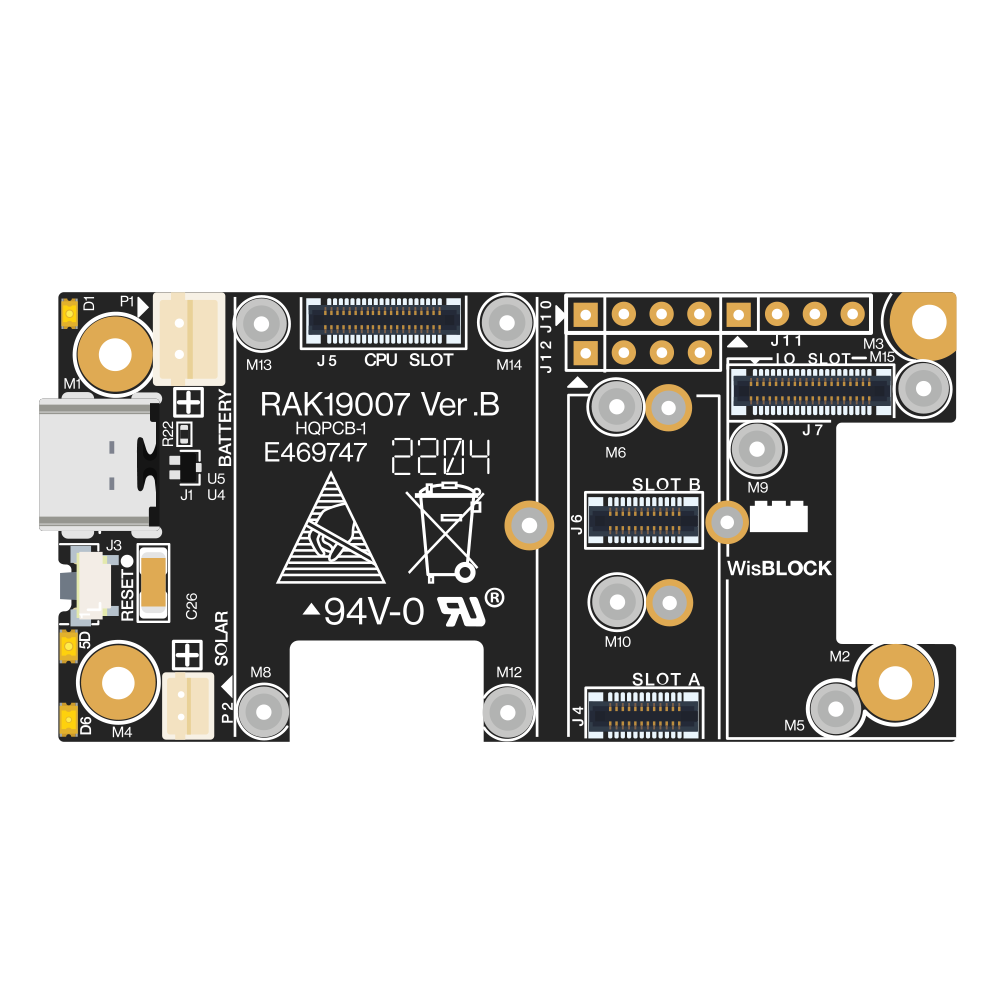
 Design with RAK19007 WisBlock Base Board 2nd Gen in Cirkit Designer
Design with RAK19007 WisBlock Base Board 2nd Gen in Cirkit DesignerIntroduction
The RAK19007 WisBlock Base Board 2nd Gen is a modular and flexible base board designed by RAKwireless to facilitate the development of IoT (Internet of Things) projects. It serves as the foundation for the WisBlock system, which allows for the easy integration of various modules such as processors, sensors, and communication modules. The base board is particularly useful for rapid prototyping, as it simplifies the process of building complex IoT solutions.
Explore Projects Built with RAK19007 WisBlock Base Board 2nd Gen
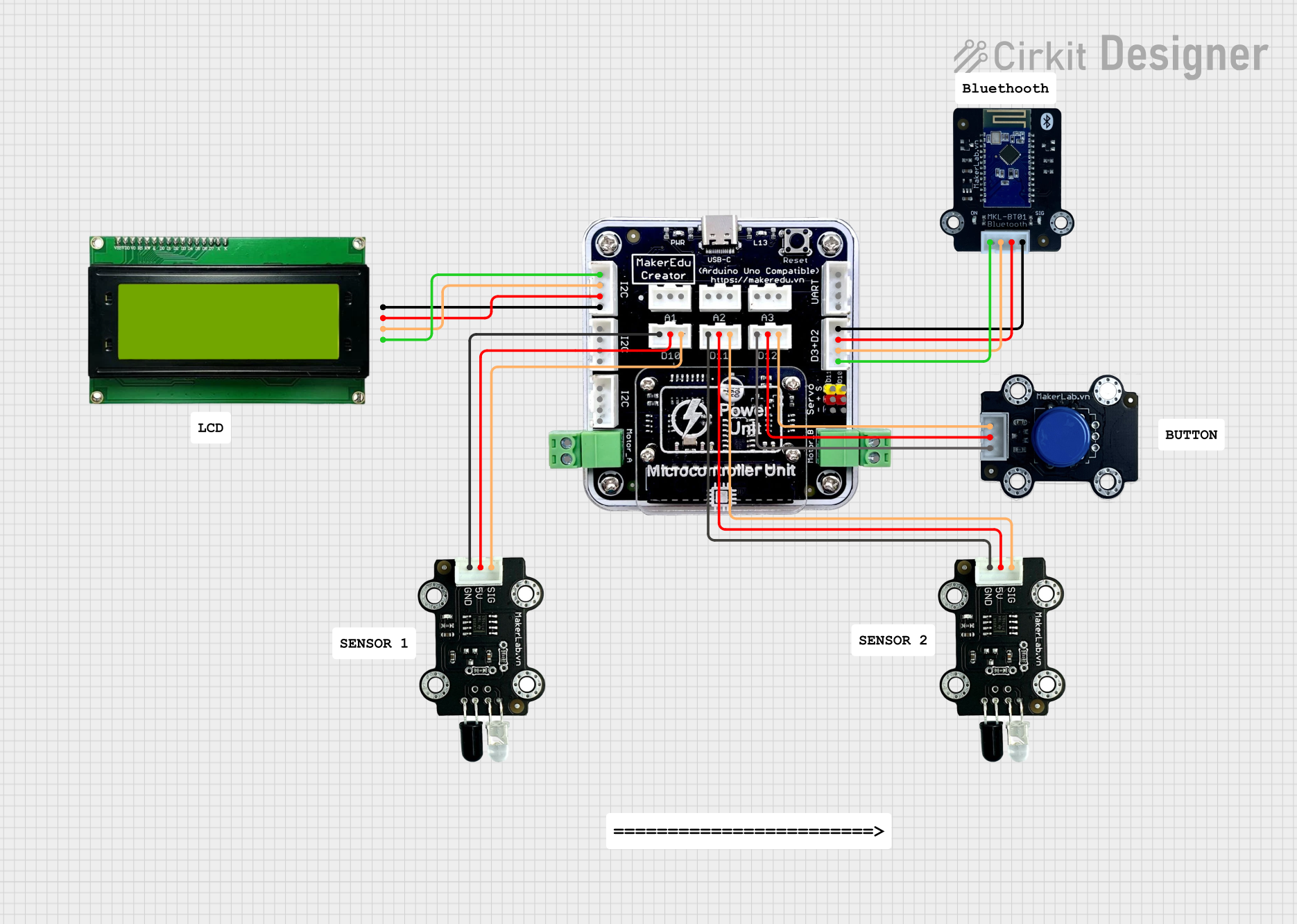
 Open Project in Cirkit Designer
Open Project in Cirkit Designer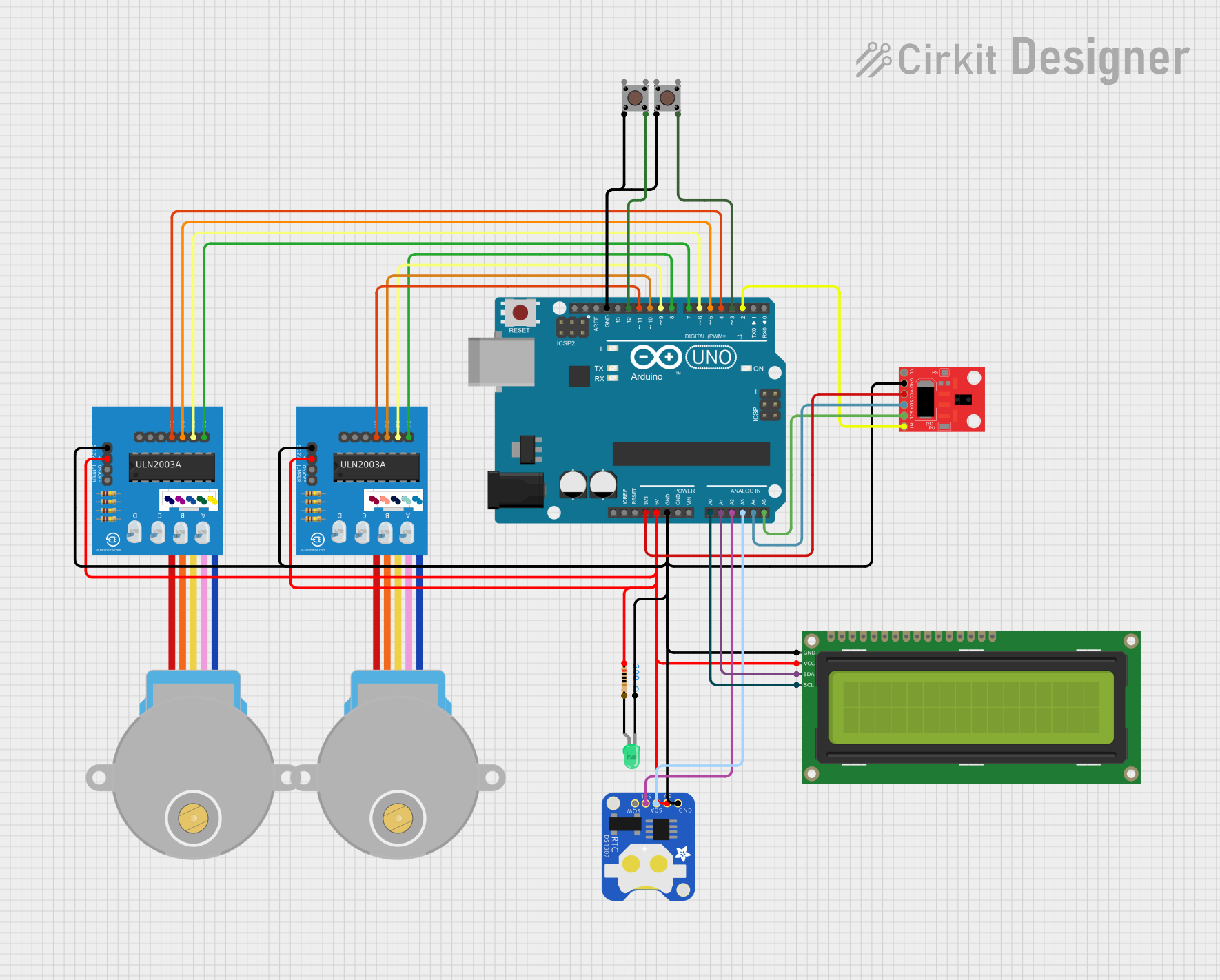
 Open Project in Cirkit Designer
Open Project in Cirkit Designer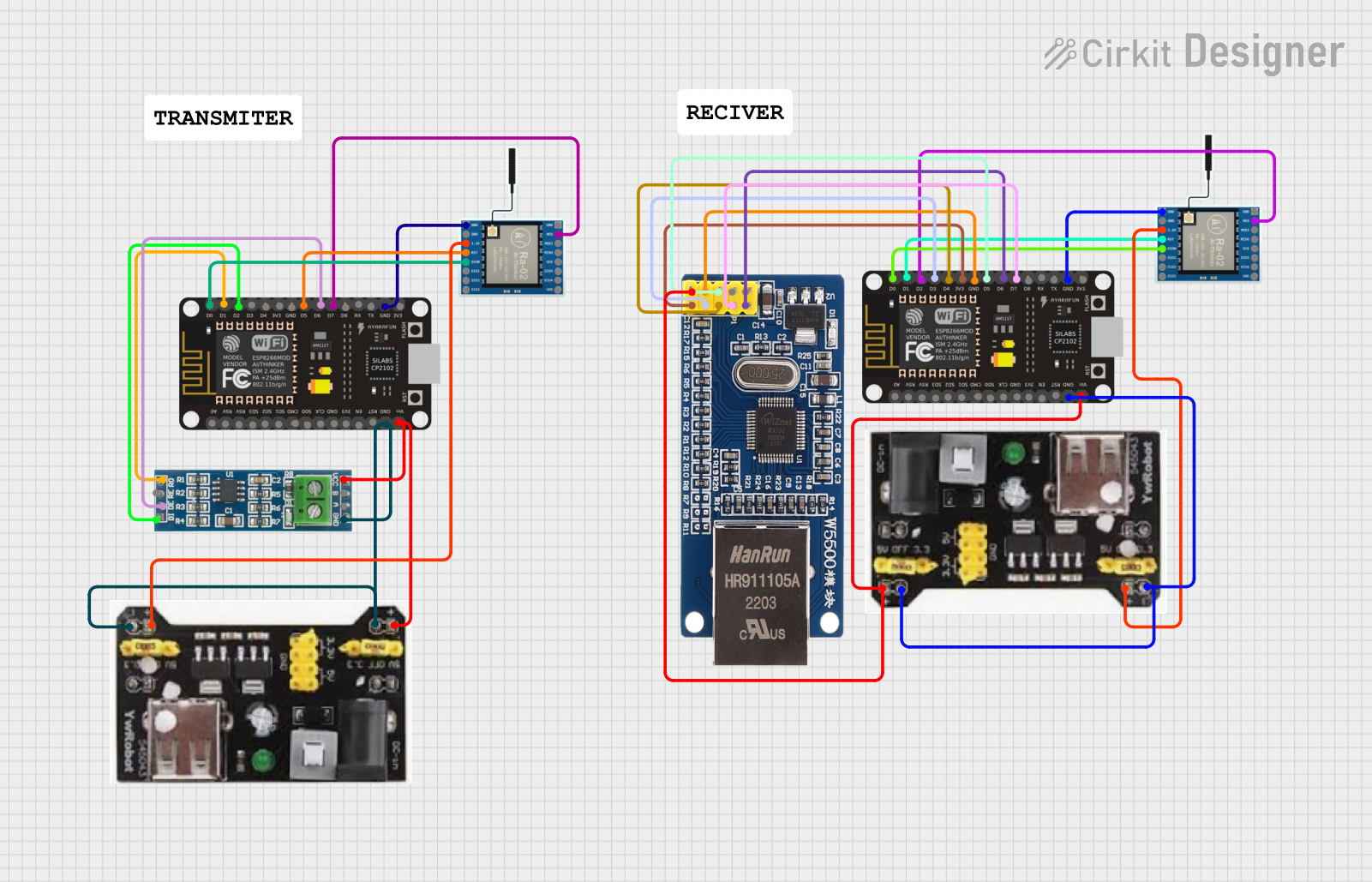
 Open Project in Cirkit Designer
Open Project in Cirkit Designer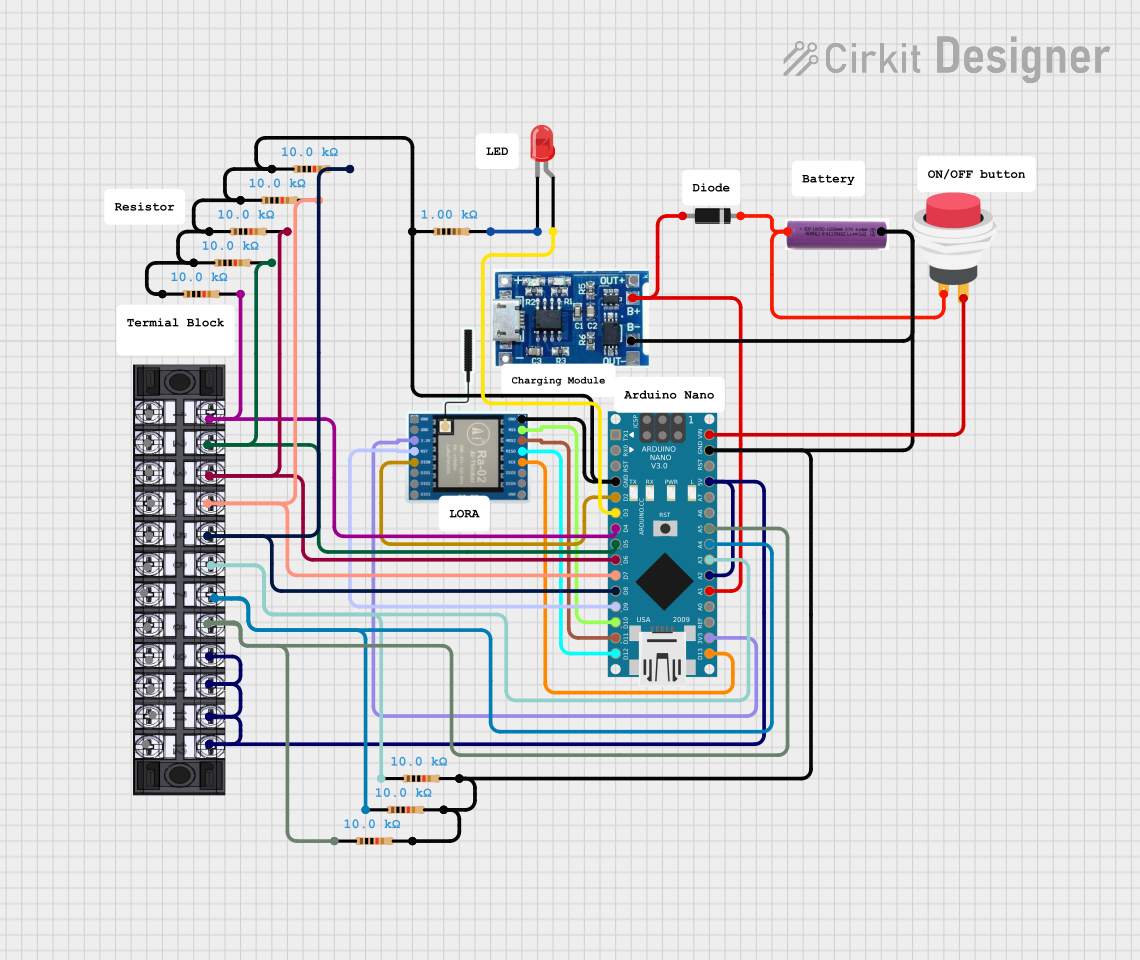
 Open Project in Cirkit Designer
Open Project in Cirkit DesignerExplore Projects Built with RAK19007 WisBlock Base Board 2nd Gen

 Open Project in Cirkit Designer
Open Project in Cirkit Designer
 Open Project in Cirkit Designer
Open Project in Cirkit Designer
 Open Project in Cirkit Designer
Open Project in Cirkit Designer
 Open Project in Cirkit Designer
Open Project in Cirkit DesignerCommon Applications and Use Cases
- Environmental monitoring (temperature, humidity, air quality)
- Smart agriculture (soil moisture, weather stations)
- Asset tracking and logistics
- Wearable devices and health monitoring
- Industrial automation and control systems
- Smart city infrastructure
Technical Specifications
Key Technical Details
- Operating Voltage: 3.3V
- Maximum Input Voltage: 5.5V
- IO Ports: Compatible with WisBlock IO modules
- Connectivity: Supports WisBlock Core and WisBlock Sensor modules
- Dimensions: 60mm x 31mm
Pin Configuration and Descriptions
| Pin Number | Description | Notes |
|---|---|---|
| 1 | GND | Ground |
| 2 | 3V3 | 3.3V power supply |
| 3 | 5V | 5V power supply (USB or battery) |
| 4-7 | IO1 - IO4 | General purpose IO pins |
| 8-11 | A1 - A4 | Analog input pins |
| 12 | I2C SDA | I2C Data line |
| 13 | I2C SCL | I2C Clock line |
| 14 | UART TX | UART Transmit |
| 15 | UART RX | UART Receive |
| 16 | SPI MOSI | SPI Data Out (Master Out) |
| 17 | SPI MISO | SPI Data In (Master In) |
| 18 | SPI SCK | SPI Clock |
| 19 | SPI NSS | SPI Chip Select |
Usage Instructions
How to Use the Component in a Circuit
Powering the Board:
- Ensure that the power supply does not exceed the maximum input voltage.
- You can power the board through the USB connection or an external battery.
Connecting WisBlock Modules:
- Align the connectors of the WisBlock Core, Sensor, or IO modules with the corresponding connectors on the base board.
- Gently press down to secure the modules in place.
Programming the Board:
- Connect the board to a computer using a USB cable.
- Use the RAKwireless Arduino BSP or the RAKwireless nRF52 SDK for programming.
Interfacing with External Components:
- Utilize the IO pins for connecting external sensors, actuators, or other peripherals.
- Ensure that the connected components are compatible with the logic level of the base board.
Important Considerations and Best Practices
- Always disconnect the power before adding or removing modules.
- Observe proper electrostatic discharge (ESD) precautions to avoid damaging the components.
- When designing custom modules, ensure they follow the WisBlock interface standard for compatibility.
- Avoid placing the board in environments with extreme temperatures, humidity, or electromagnetic interference.
Troubleshooting and FAQs
Common Issues
- Module Not Recognized: Ensure that the module is properly seated and the pins are aligned correctly.
- Power Issues: Verify that the power supply is within the specified range and the board is receiving power.
- Communication Errors: Check the connections and settings for I2C, SPI, or UART interfaces.
Solutions and Tips for Troubleshooting
- Re-seat any modules that are not recognized to ensure a good connection.
- Use a multimeter to check the power supply voltage and board power rails.
- For communication issues, use a logic analyzer to trace signals and verify protocol integrity.
FAQs
Q: Can I use any WisBlock module with this base board?
- A: Yes, the RAK19007 is designed to be compatible with all WisBlock modules.
Q: How do I update the firmware on the base board?
- A: Firmware updates are typically done through the WisBlock Core module using the appropriate SDK or Arduino BSP.
Q: What is the maximum number of modules I can attach to the base board?
- A: The maximum number depends on the power consumption and IO requirements of the modules. Refer to the technical specifications of each module.
Example Code for Arduino UNO
// Example code for interfacing RAK19007 with Arduino UNO
// This example assumes the use of a compatible WisBlock Core module programmed via Arduino IDE.
#include <Wire.h>
void setup() {
// Initialize serial communication
Serial.begin(115200);
// Initialize I2C communication
Wire.begin();
// Setup code for the specific WisBlock modules goes here
}
void loop() {
// Main code to interact with the WisBlock modules goes here
// Example: Reading data from a WisBlock sensor module
// byte sensorData = readSensorData();
// Serial.println(sensorData);
// Delay between reads for stability
delay(1000);
}
// Function to read data from a hypothetical sensor module
byte readSensorData() {
// Replace with actual sensor read code
return 0;
}
Note: The above code is a generic template and should be modified to fit the specific WisBlock Core and Sensor modules used in your project. Always refer to the module datasheets and example codes provided by RAKwireless for accurate programming details.